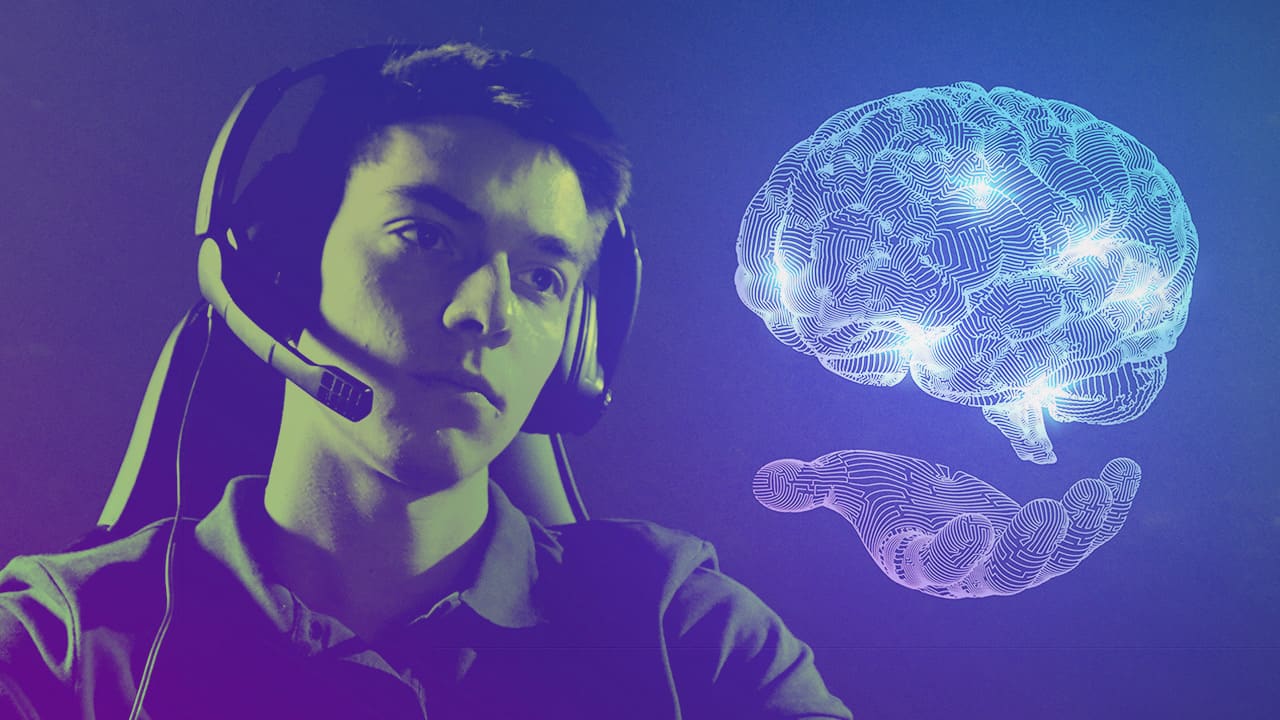In the world of gaming, terms like immersion, addiction, and reward systems are often thrown around to describe why players get hooked on their favorite titles. While game design, storytelling, and graphics play crucial roles in shaping a player’s experience, there’s a powerful biological factor at work behind the scenes — dopamine. Often labeled the “feel-good” chemical, dopamine has a significant influence on motivation, learning, and the pleasure we derive from certain activities, especially gaming.
This article explores dopamine’s role in gaming enjoyment, the neuroscience behind its effects, how game designers harness this chemical to enhance engagement, and the potential benefits and downsides of dopamine-driven gameplay.
What Is Dopamine?
Dopamine is a neurotransmitter — a chemical messenger in the brain — responsible for transmitting signals between neurons. It plays a central role in a variety of cognitive functions, including:
-
Motivation
-
Pleasure
-
Reward processing
-
Learning
-
Goal-directed behavior
Contrary to the common misconception that dopamine causes pleasure directly, it is more accurately described as the brain’s motivator for seeking rewards. It doesn’t make you feel good per se, but it drives you to pursue things that can result in feeling good.
The Dopamine System and Gaming
When a person plays a video game, their brain often interprets it as a sequence of challenges and rewards. Whether it’s leveling up, unlocking an achievement, or beating a difficult boss, these accomplishments can trigger a surge of dopamine — reinforcing the behavior and making the player want to return for more.
Core Gaming Activities That Trigger Dopamine Release:
-
Achievement and Progress
Games that include leveling systems, XP points, and achievement unlocks tap directly into the brain’s reward circuitry. -
Unpredictable Rewards (Loot Boxes, RNG)
Randomly generated rewards — like loot boxes or rare item drops — activate the dopamine system in a way similar to gambling. The unpredictability increases excitement. -
Competition and Social Validation
Winning in multiplayer matches or receiving likes/shares for in-game creations stimulates the same dopamine circuits triggered by social rewards in real life. -
Mastery and Skill Development
When a player learns a new mechanic, improves their reaction time, or beats a difficult level, the brain rewards this learning process with dopamine surges.
The Role of Game Design in Triggering Dopamine
Smart game designers build mechanics that intentionally leverage dopamine pathways to keep players engaged. Here are some techniques:
1. Variable Ratio Rewards
This technique offers rewards on an unpredictable schedule, much like slot machines. For example, a rare item might drop once every 20 kills — or it might appear on the first try. The unpredictability enhances dopamine release, making players keep playing in hopes of a big payoff.
2. Progress Bars and XP Systems
Visual representations of progress — like experience bars or level meters — provide a constant stream of micro-rewards. Every little advancement keeps the dopamine loop going.
3. Streak Mechanics and Daily Challenges
Features like login bonuses or streak rewards encourage repeated play, fostering habit formation. These systems create small but consistent dopamine hits that encourage users to return.
4. Sensory Feedback
Flashing colors, sound effects, and haptic feedback (vibration) associated with victories or achievements amplify the pleasure and anticipation of rewards.
Dopamine and Flow State
When dopamine levels are balanced, players can enter a flow state — a mental condition characterized by total immersion and focus. This state, described by psychologist Mihaly Csikszentmihalyi, is common in gamers when they’re fully engaged in a challenge that’s neither too easy nor too difficult.
During flow, the dopamine system is steadily active, keeping motivation high and distractions at bay. This is where gaming becomes most enjoyable — when players lose track of time and become deeply involved in their virtual environment.
Gaming, Dopamine, and Habit Formation
Because dopamine encourages repetition of rewarding behaviors, gaming can lead to habit formation — and, in some cases, problematic use or addiction.
When Does It Become a Problem?
-
When gaming interferes with sleep, relationships, work, or school
-
When players chase rewards at the expense of real-life goals
-
When people lose interest in other activities that don’t offer the same dopamine payoff
The World Health Organization has even recognized Gaming Disorder as a mental health condition, characterized by impaired control over gaming and prioritization of gaming over other interests.
Gaming and the Dopamine “Crash”
Just as gaming can produce dopamine highs, players can also experience lows when they stop playing, especially after an intense session. This is sometimes referred to as a dopamine crash — a temporary dip in motivation and mood that can make non-gaming activities feel dull or boring.
This crash can lead to:
-
Irritability
-
Difficulty concentrating
-
Lack of interest in everyday tasks
In extreme cases, this can mimic withdrawal symptoms seen in other behavioral addictions, highlighting the importance of balance and moderation.
Benefits of Dopamine-Driven Gameplay
While much attention is given to the risks, the positive effects of dopamine in gaming shouldn’t be overlooked.
1. Enhanced Learning and Skill Building
Games that are well-designed and challenging can improve problem-solving, memory, and hand-eye coordination. Dopamine reinforces these learning processes, making players more likely to retain skills.
2. Improved Motivation
Gamification — the application of game-like mechanics to non-game settings (like fitness apps or language learning) — uses dopamine triggers to enhance motivation. Platforms like Duolingo, for example, use XP, streaks, and rewards to encourage daily learning.
3. Therapeutic Applications
Some games are being used in mental health therapy, helping people with anxiety, PTSD, or ADHD by providing structured, engaging, and dopamine-rewarding environments.
The Dopamine Loop: A Double-Edged Sword
To better understand the addictive potential of gaming, researchers often refer to the dopamine loop:
-
Cue – The sight or sound of a game, or even a notification, triggers anticipation.
-
Action – The player starts playing to satisfy that anticipation.
-
Reward – Success in the game releases dopamine.
-
Repetition – The brain remembers the pleasure and seeks to repeat it.
This loop can be productive when applied to skill development and learning, but harmful when it overrides other priorities.
Tips for Healthy Dopamine Management in Gaming
-
Set Time Limits – Use alarms or parental controls to manage play sessions.
-
Prioritize Real-World Goals – Balance in-game achievements with real-life progress.
-
Take Breaks – Avoid long, unbroken gaming sessions to prevent dopamine overload.
-
Diversify Activities – Engage in hobbies that don’t revolve around digital rewards.
-
Stay Aware of Your Triggers – Recognize what parts of a game keep you hooked and why.
Conclusion: Understanding the Brain to Better Enjoy the Game
Dopamine is a central driver of gaming enjoyment, reinforcing actions that feel rewarding and helping players stay engaged. Game developers harness this power through carefully crafted reward systems, challenges, and sensory feedback loops. For most, this results in fun, flow, and satisfaction.
However, understanding dopamine’s role also allows players and parents to recognize when healthy gaming crosses into problematic territory. With mindful play, balanced routines, and awareness of dopamine’s influence, gamers can continue to enjoy their favorite pastimes while staying in control.
Whether you’re slaying dragons, building empires, or just trying to beat your high score, dopamine is there behind the scenes — pushing you to play, improve, and come back for more.

